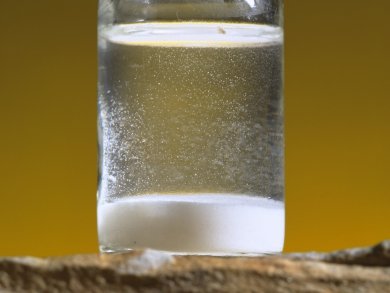The production of drinking water through desalination processes is increasing worldwide. Microbial desalination cells (MDC) remove salt water while simultaneously generating electricity, unlike other techniques which require energy for desalination.
Bruce Logan and colleagues, Pennsylvania State University, USA, have adapted MDC technology into a microbial electrodialysis cell (MEDC) which uses a power source at the cathode to boost the voltage and generate hydrogen. The MEDC produced 6.5 mL of hydrogen from one batch cycle with 5 g/L NaCl. At the higher concentration of 20 g/L, 2.7 mL of H2 was generated.
The energy demand for the MEDC was between 2.2 (5 g/L NaCl) and 1.2 kWh/m3 (20 g/L NaCl). However, more than twice this amount of energy was recovered in the hydrogen, suggesting that the hydrogen gas produced could be used to run the MEDC and as a fuel for other processes.
Image: (c) Andy Washnik/Wiley
- Microbial Electrodialysis Cell for Simultaneous Water Desalination and Hydrogen Gas Production
M. Mehanna, P. D. Kiely, D. F. Call, B. E. Logan,
Environ. Sci. Technol. 2010, 44.
DOI: 10.1021/es1025646




